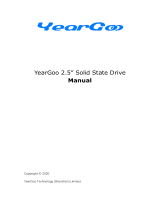
PowerEdge T710 Technical Guidebook
Dell
6.6 Maximum Input Amps ............................................................................................................. 20
6.7 EnergySmart Enablement ....................................................................................................... 20
6.8 Energy Star Compliance ......................................................................................................... 20
6.9 Acoustics ................................................................................................................................. 20
7 Block Diagram ................................................................................................................................. 22
8 Processors ...................................................................................................................................... 22
8.1 Overview ................................................................................................................................. 22
8.2 Features .................................................................................................................................. 23
8.3 Supported Processors ............................................................................................................. 23
8.4 Processor Configurations ........................................................................................................ 24
8.5 Additional Processor Information ............................................................................................ 24
9 Memory ........................................................................................................................................... 24
9.1 Overview ................................................................................................................................. 24
9.2 DIMMs Supported ................................................................................................................... 24
9.3 Memory Population Scenarios ................................................................................................ 24
9.4 Slots/Risers ............................................................................................................................. 25
9.5 Speed/Memory Features ......................................................................................................... 25
9.6 Memory Population ................................................................................................................. 26
9.7 Memory Speed Limitations ...................................................................................................... 26
9.8 Mirroring .................................................................................................................................. 27
10 Chipset ............................................................................................................................................ 27
10.1 Overview ................................................................................................................................. 27
10.2 Intel 5500 Chipset Dual I/O Hub (IOH) .................................................................................... 27
10.3 Intel Quickpath Architecture .................................................................................................... 28
10.4 PCI Express Generation 2 ...................................................................................................... 28
10.5 Intel Direct Media Interface (DMI) ........................................................................................... 28
10.6 Super I/O Controller ................................................................................................................ 29
11 BIOS................................................................................................................................................ 29
11.1 Overview ................................................................................................................................. 29
11.2 Supported ACPI States ........................................................................................................... 29
12 Embedded NICs/LAN on Motherboard (LOM) ................................................................................ 29
12.1 Overview ................................................................................................................................. 29
13 I/O Slots .......................................................................................................................................... 30
13.1 Overview ................................................................................................................................. 30
13.2 X16 Express Card Specifications ............................................................................................ 30
13.3 Available PCIe Cards .............................................................................................................. 31
13.4 Boot Order ............................................................................................................................... 32
14 Storage............................................................................................................................................ 32
14.1 Overview ................................................................................................................................. 32
14.2 3.5” X8 HDD Backplane .......................................................................................................... 33
14.3 2.5” X16 HDD Backplane ........................................................................................................ 33
14.4 Storage Card Support Matrix .................................................................................................. 33
14.5 Available Drives ...................................................................................................................... 34
14.6 RAID Configurations ............................................................................................................... 35
14.7 Internal Storage Controllers .................................................................................................... 42
14.8 LED Indicators ......................................................................................................................... 42
14.9 Optical Drives .......................................................................................................................... 42
14.10 Tape Drives ............................................................................................................................. 42
15 Video ............................................................................................................................................... 42






















